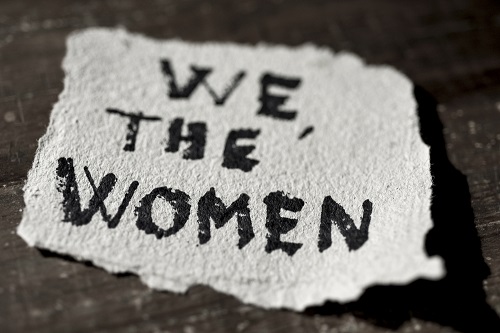Liberty Matters
Remember the Ladies: a Rejoinder

Sarah Swkire is so right: there is a Jane Austen for any season and any place. It depends on who is talking (scientists, economists, artists, political thinkers) and where the discussion is located (in the United States, in Europe, in Japan and so forth). You talk about science? Marie Curie is the usual female name that pops up. Economics? Joan Robinson. Art? Artemisia Gentileschi. Political philosophy? Olympe de Gouges. One seat only, as if they actually were the only female voice among thousands of male ones. This was partially true, though due to the condition of women who have been subjected to gender stereotypes that systematically reinforced and prevented them from emerging as peers with their male counterpart until a few decades ago. Nonetheless, recent developments in the history of human disciplines and science have showed us the hidden role of many women whose contributions have been forgotten or neglected.
As an economist and a historian of economic thought, I have been tried to collect and disclose the contribution of women economists within the Austrian school of economics before the emigration from Vienna in the 1930s. They worked and published in the same period of Wieser, Mises and Hayek; they have been forgotten.
As a passionate admirer of the Bauhaus style, I have only recently discovered that besides Gropius, Schlemmer, Mies van der Rohe, and the other well-known male names, there was a steady group of women working in Dessau along with masters. Women at the Bauhaus were allowed to enroll in the school, although curricula such as paintings, architecture, and industrial design were closed to them. Yet, under the leadership of Gunta Stölzl, they turned their weaving workshop into the financial cornerstone of the Bauhaus.
Examples like these might be countless. Pick a subject, dig into its history, and you will find forgotten ladies. And you will probably discover they were as good as the gentlemen, and in some cases they did better: both talent and performance are not a matter of gender; rather, they are a matter of natural propensity and education, or a combination of the two. In fact, I insist on pointing out that the first and foremost battle for the emancipation of women was the struggle to get the same education for boys and girls which led to the request for economic independence, legal rights and then political rights. There is no doubt that the enfranchisement of women represented the turning point of women’s social emancipation, as Amato’s essays rightly underlined by remembering Abigail Adams’ contribution. The starting point of Adams’ thought was the nature of tyranny, intended as the love of dominion. She was clear in comparing the tyranny in the public sphere and the tyranny in the domestic sphere. And she insisted on considering marriage as a potential source of tyranny which occurs when the freedom of women is subjected to the will of their husbands, whether they are benevolent or malevolent.
The mechanism of being subjected to someone’s else dominion is tyranny per se.
The subjection of women within marriage (as wives) and within society (as not-fully-citizens) was strengthened by the fact that their efforts in taking care of the family was not acknowledged as a social/political task, rather it was regarded as their duty, grounded on biology. Duties imply some rights though. In fact, the request for enfranchisement was a further, albeit not the final, step on a long journey toward recognition of the rights of women as free individuals and citizens whose performance contributes to the well-being of the society as a whole.
All the Ladies who took part in this long journey belong to the story of the notion of individual freedom for all, regardless of their gender (or ethnicity). As Matthes’ essay points out, the Grimké sisters’ commitment to both abolition and women’s emancipation was an example of that fight against tyranny. No institution should harm the individual; neither marriage nor the State should be allowed to reduce the natural propensity of individuals to be free and to flourish.
As Wollstonecraft wrote in her famous essay: “Liberty is the mother of virtue, and if women are slaves by their very constitution, and not allowed to breathe the sharp invigorating air of freedom, they must always languish like exotics, and be regarded as beautiful flaws in nature.” (p.25). Liberty is a matter of education, a request for independence in spiritual and material forms. Among the Ladies who struggle for it, let me remember the Venetian philosopher, Elena Lucrezia Corner (1646-1684), the first women who, in 1678, got a Ph.D. in Philosophy at the University of Padua. She paved the way on a long journey for her (and us).
References:
Becchio Giandomenica (2019). “Austrian school women economists”. in K. Madden and R. Dimand (Eds.) Routledge Handbook of the History of Women's Economic Thought. London: Routledge, pp. 309-324.
Guernsey, Jane Howard (1999). The Lady Cornaro: Pride and Prodigy of Venice. College Avenue Press.
Copyright and Fair Use Statement
“Liberty Matters” is the copyright of Liberty Fund, Inc. This material is put on line to further the educational goals of Liberty Fund, Inc. These essays and responses may be quoted and otherwise used under “fair use” provisions for educational and academic purposes. To reprint these essays in course booklets requires the prior permission of Liberty Fund, Inc. Please contact oll@libertyfund.org if you have any questions.